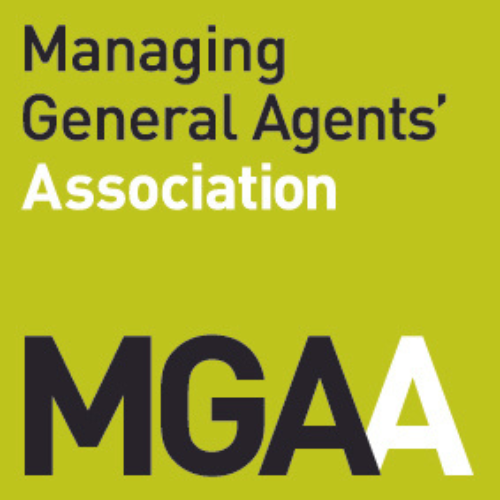At the end of May 2020, the PRA published SS 1/20, its Supervisory Statement introducing into effect the Prudent Person Principle (PPP) following a consultation process which resulted in some changes to the original proposals. There can be no doubt that the PRA was not prescient as regards the existence or outcomes of the Covid-19 Pandemic but all the same the timing of the Supervisory Statement, aligned with Operations Resilience could not have been more appropriate.
The PPP applies to all Solvency II firms including insurers, mutuals and third country branches.
The PPP is designed to provide the PRA with a basis upon which it can assess the prudency of a firm’s approach to the investment of its assets. That approach will be by applying the PPP. SS 1/20 sets out the PRA’s expectations regarding:
(a) the development and maintenance of an investment strategy;
(b) the management of risks arising from investments and their internal governance within the investment function; and
(c) the investment in assets not admitted to trading on a regulated market (hereafter ‘non-traded assets’) and intragroup loans and participations.
Looking at it broadly, this aims to achieve resilience in financial security as regards investment risk and puts in place some key expected features to create a consistent approach but not a consistent portfolio which would lead to potentially increased systemic risk. A further step in the right direction for ensuring the long-term viability and financial security of insurance firms regulated by the PRA. Not surprisingly given the name of the principle it focuses on prudency.
The PPP covers a number of key areas which we look at briefly below. In doing so takes account of a whole raft of requirements under Solvency II and corporate governance contained in a wide ranging number of Supervisory Statements covering Investment, Liquidity, Governance and individual accountability (SM&CR), Risk Management and Capital Management, matching, Securitisation and reinsurance counterparty credit risk.
Many firms will be meeting most if not all of the expectations set out by the PRA but it is worth looking at them again. As a comprehensive but high-level consolidation of firm’s requirements, the Supervisory Statement is a useful tool to cross-check to ensure that firms are meeting covering all the issues expected.
Investment Strategy
The PRA has set out its expectations for the issues to be covered by Firms in a written investment strategy. These include:
- investment objectives and strategic asset allocation;
- consideration of investment constraints when setting investment objectives and strategic asset allocation;
- alignment of the investment strategy with the business model and, where appropriate, how the strategy takes into account the nature and duration of a firm’s liabilities and obligations, and the best interests of policyholders;
- alignment of investment strategy with board risk appetite, risk tolerance limits and investment risk and return objectives; and
- a complete list of assets and how those assets have been invested in accordance with the PPP (in line with the requirements set out in Article 309(2)(e) of the Delegated Regulation).
Many firms will already have a written investment strategy though there are many which still have only high-level principles. For firms which have not yet developed their detailed strategy, now is the time to ensure that it is fully documented.
Importantly there will also be a need to be able to evidence the above requirements. The strategy document cannot simply set out a strategy and then leave it to the Directors or Chief Investment Officer to explain how that written strategy meets each of these expectations. It should document the manner in which these are met.
Where investments are managed at a group level the group Committee or Individuals responsible will need to take account of the PRA requirements and ensure that that the documented strategy takes account of the requirement that investments for the PRA regulated entity meet the PRA’s expectations particularly in relation to the need to meet short term liabilities and obligations through matching and to be aligned to the Board approved risk appetite, tolerance limits and investment risk and return objectives. As and when these may change the strategy document will need review.
Firms which have not done so should now review their documented investment strategy and ensure it meets these requirements. There is also a need at governance level to ensure that at least once annually a review is done by the Board to ensure that the strategy continues to meet these requirements. If there are significant market shifts or changes in the firms overall strategy or risk tolerance limits a review should also take place as it should when there might be a change in the strategy itself or material asset or class investment changes are anticipated.
We would recommend that this becomes a standing agenda item in annual board calendars. Where a firm has an investment committee the committee should report to the board annually on the outcome of a review and any required changes.
Investment Risk Management
Investments by firms must be made in line with the documented strategy. The PRA also has an expectation that firms will align individual investments with the firm’s risk appetite, risk policies and tolerance limits.
The expectation of the PRA is that the investments themselves must be in assets where the firm is able to identify, measure, monitor, manage and control and take into account their own solvency needs in their ORSA. If the investment is in securitised assets or derivatives the risk to the underlying asset should also be included within the scope of the risk management framework. The monitoring should include:
- changes in the value and volatility of their investment portfolios and individual assets and the firm’s ongoing ability to monitor these,
- changes in the characteristics of the assets held (e.g. changes in the credit quality),
- changes in the value or characteristics of underlying exposures on which the performance of the asset(s) invested in depend,
- changes in the external environment which may affect the security of assets,
- breaches of internal quantitative limits for assets and exposures,
- concentrations of single risks in the investment portfolio (e.g. counterparty, asset class, geographical industry or sector); and
- changes to the firm’s risk profile which may lead to asset-liability mismatch.
Monitoring needs to be regular and the reports appropriate, accurate and timely. This suggests a quarterly review by either the Board or Investment Committee and no doubt, if there are significant or material events outside of the cycle, the Board or Investment Committee should meet to discuss the impact. The PRA urge firms to look closely at credit spread and default risk.
A firm which is not monitoring according to these expectations should review their current monitoring and governance reporting and consider whether changes are require, particularly to the question of alignment with ORSA.
Investment Risk Management Policy
The PRA has used the Supervisory Statement to remind firms of the areas that their risk management policies should cover under Solvency II and of the need to include quantitative investment limits for assets and exposures and to remain within those limits. Firms which have been through the IMAP process will be comfortable that they have met the requirements for setting limits and they will need to be able to demonstrate that they have been able to remain within the limits or when necessary adjust their portfolios.
Not surprisingly the PRA expect firms to take account of the following when setting their limits:
- nature and duration of the firm’s liabilities,
- nature and quantification of the risks associated with each category of asset and with individual assets,
- access to investment risk management capabilities proportionate to the complexity of the asset class involved (especially for any planned new categories of investment),
- need for proper diversification of assets,
- impact of any uncertainty on the valuation of assets, or on the ability of the firm to realise an asset’s value in the event of sale, including under stress,
- uncertainty around the timing and the channels through which investment risks may materialise and the actions available to mitigate them, and
- material reinsurance cessions and whether these create correlations of counterparty credit risk, particularly if collateral arrangements are used.
Quantitative limits will be expected to be adjusted as and when strategy, risk appetite or risk tolerances change and firms should be able to evidence the adjustment of the limits and investments accordingly. It would be a rare event when the adjustments to investments precede any adjustments to limits, tolerances and strategy but it may be necessary in extreme circumstances.
Firms are also expected to evidence how their Policy deals with, and the firm is managing the risk of, correlation and contagion not dealt with by diversification.
Counerparty Risk
No-one will be surprised by the PRA’s expectation that investment limits are set in order to ensure properly diversified and resilient portfolios are achieved. The standard by which these will be viewed and considered by the FCA is objective. It is also therefore the approach that firm’s must take to determining whether they have an appropriately diversified portfolio which is not exposed to too much counterparty risk through concentration and stress testing is the expected manner in which firms will need to be able to assess and evidence that this has been achieved.
Objectiveness is also to be used when conserving whether the portfolio has been invested in a manner which achieves acceptable levels of diversification of assets, geographic location and issuer or group of undertakings. Again, stress testing is the PRA’s choice for the most appropriate method for evidencing that sufficient diversification has been achieved.
For each of these the PRA look to firms to undertake stress testing which involves a range and combination of scenarios in order to identify sets of circumstances where solvency risk appetite might be threatened. This is in line with the ORSA requirements.
Interestingly the PRA reminds firms about exposure to both climate and political risks concentrations.
Outsourcing
The PRA has very clear requirements for the outsourcing of critical or operationally important functions and activities. These are contained in Section 7 of the Conditions Governing Business and the PRA use the Supervisory Statement to remind firms that outsourcing investment does not remove the overriding obligation for the firm to comply with all PRA requirements. Thus, the need for the Board to ensure that the correct policies and processes are in place to meet the requirements we have set out above remains regardless of whether the firm has outsourced to third party providers or to other firms withing the same group of companies.
Non-Traded Assets
The PRA accepts that non-traded assets can be appropriate but recognises that risks arise in valuation and speed of cashing in particularly in stressed markets. Their approach is to ensure that firms have assessed a number of criteria when considering investments in non-traded assets, particularly when looking at what might be the right limit to maintain a balanced and prudent portfolio. These are:
- robustness of valuation methodology, particularly in stressed condition,
- robustness, capability and maturity of the internal rating framework,
- where the firm has an internal model how the firm adjusts and reconciles material differences between assessment of investment risk under the model and using the PPP, and
- the materiality of any embedded optionality and how it might affect the risk profile of the asset over time particularly in periods of stress.
The PRA also expects the level of expertise of the key individuals, including any investment managers, and the risk management systems and controls to increase commensurate with the increase in scale and risk of the investment in non-traded assets. These key individuals must have sufficient experience and expertise. Additionally, they must be able to and test the suitability of the investment under severe stress scenarios to ensure matching with the firm’s liabilities with the non-traded assets maintained at prudent levels.
Valuation Uncertainty
All assets have valuation uncertainty and it is a key risk in non-traded assets and thinly traded assets. The PRA’s approach is to require firms to demonstrate that they meet the PPP by complying with the risk management requirements set out in Conditions Governing Business 3.4. |The PRA will look to check firms are meeting the requirements of the Delegated Regulation and their approach to justifying the alternative valuation approach used. Effective systems and controls will be required to limit and manage exposure to valuation uncertainty. Grading exposure to risk and defining appropriate investment limits are required and must be aligned to the firm’s risk appetite. Firms must also recognise and work through the differences between uncertainty in valuation and uncertainty in realisation.
Intragroup Loans and Participations
The PRA requires assets which back technical provisions to be invested in the best interests of the policyholders. This has particular importance when looking at intragroup arrangements as these may be in the best interests of the shareholders but not the policyholders and give rise to a conflict of interest as a consequence. Our experience is that these conflicts are not often included on a firm’s conflicts register. The PRA describes the evidentiary level to establish the benefit of intragroup loans as a “high hurdle”.
Because of the height of the hurdle and the inherent conflict of interest, the PRA expects the Board of the regulated firm to be satisfied that these conflicts have been resolved in the best interests of policyholders before the investment is made an any group asset as should any conflict which arises following the investment.
Helpfully the PRA makes a distinction between intragroup reinsurance arrangements and intragroup investments because of the differing economic substance to the transactions and assist to match investment with insurance liabilities very closely. However, the PRA remains closely interested in internal reinsurance arrangements and in our experience will expect significant collateralisation regardless of the financial strength of the reinsurer. Usually this is a consequence of concentration risk rather than credit risk. However the PRA expects firms, and given the conflict this generally means the Board, to consider all of the following when considering internal investment arrangements:
- conflicts of interest,
- concentration risk,
- credit risk,
- liquidity risk,
- legal and operational risk, and
- what they describe as “wrong-way” risk involving a correlation between the counterparty default risk and other risks borne by the firm.
Outwards Reinsurance
The PRA makes mention of outwards reinsurance as it is an asset of the firm. Their approach to reviewing reinsurance programmes and structures will be based on a case by case basis as one would expect because no two firms are the same and no two firms have the same outwards reinsurance arrangements. They mention collateral and refer firms to Supervisory Statement 20/16 as a reminder of their expectations.
Summary
There is nothing materially new in this Supervisory Statement and it is clear that the timing is more about reminding firms of their expectations as we approach a potential recessionary period. It is, however, helpful for firms to have in one place a statement of the PRAs expectations as this makes it easier to take a step back, take stock and view a firm’s position objectively. Often getting out of the weeds and taking an approach of this nature can lead to further enquiries. At a time like this we certainly believe there is benefit in taking a little time and having a look.
If you would like to discuss any of these issues in complete confidence, please contact us.










